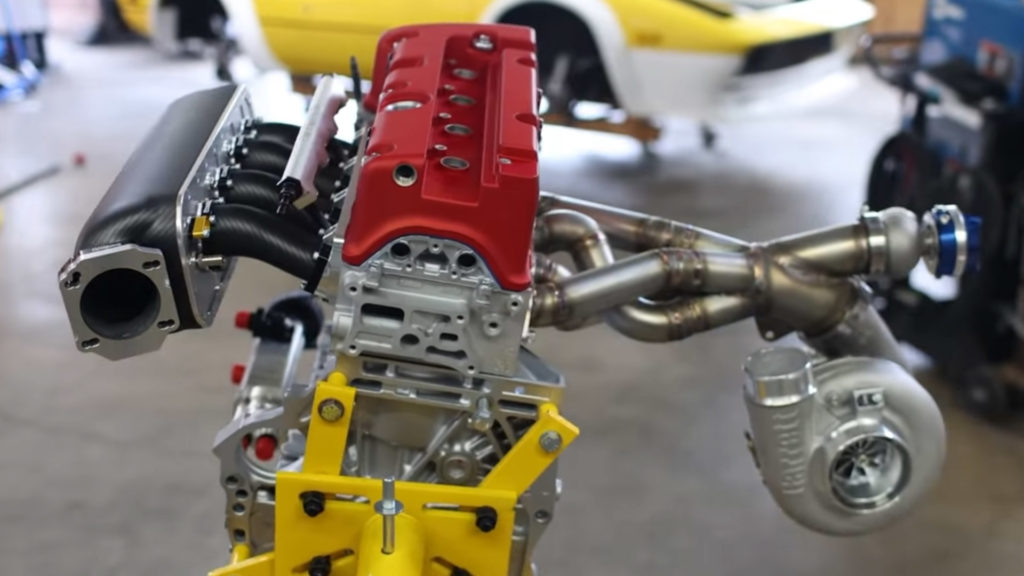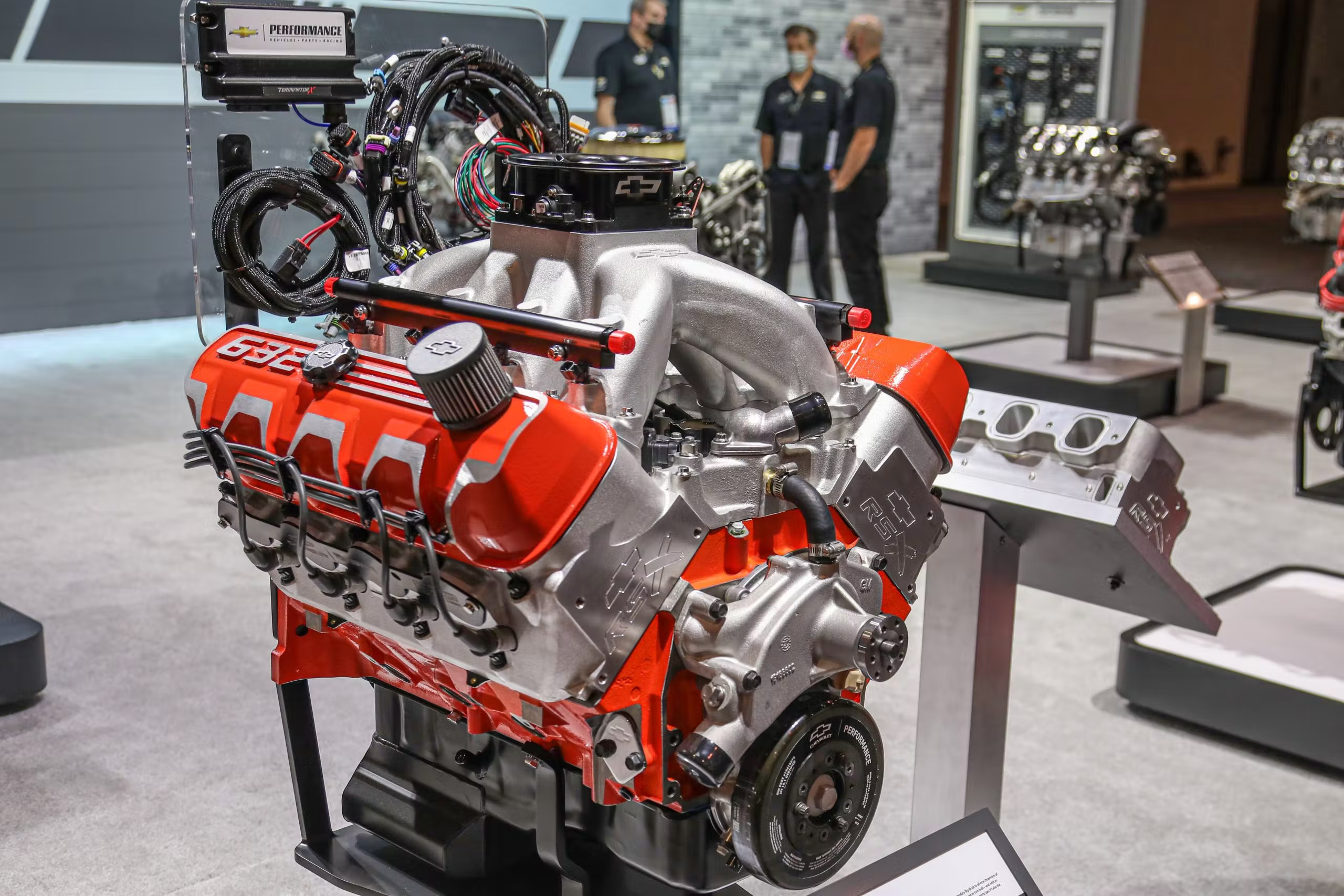
The RB25DET engine from Nissan represents the infamous RB series, which was introduced in 1991 and replaced the RB20DET. The RB25 is most well-known for being installed in the Nissan Skylines R33 and R34 GTS-T.
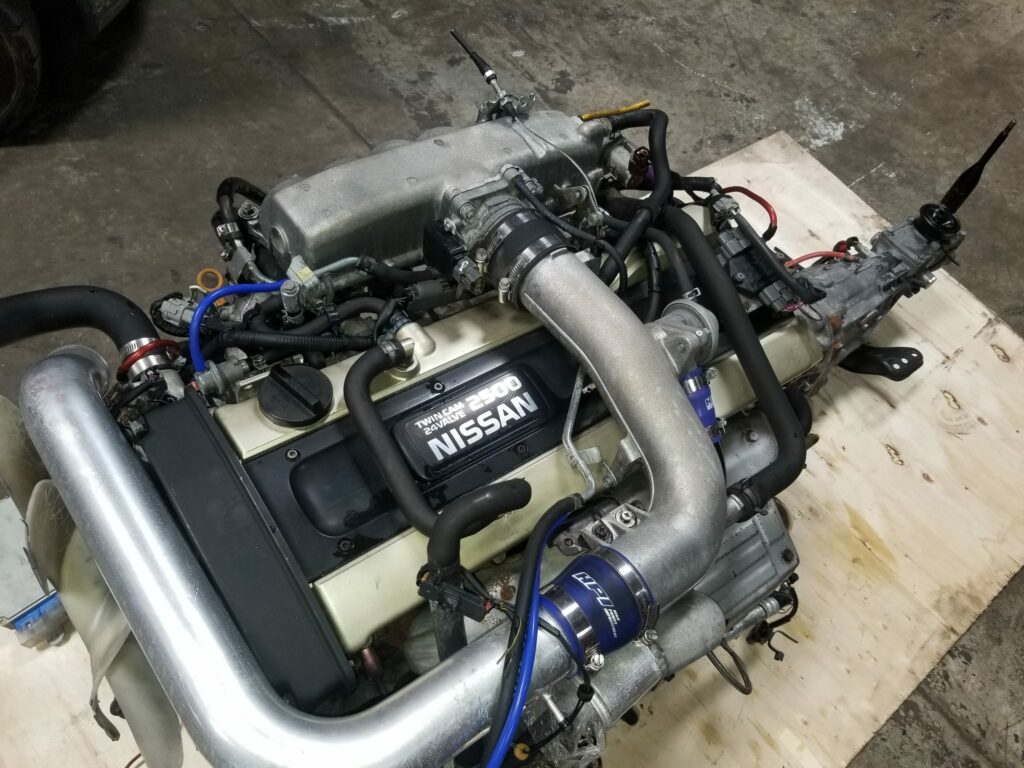
Along with its competitors, the remarkable 2498cc engine has grown in popularity over time, with enthusiasts eager to install it in all kinds of bizarre and fantastic constructions across the globe.
If you’re curious what the letters in the name stand for, the “RB” in RB25DET refers to the engine series, while the “25DET” stands for “2500-cc DOHC Electronic Fuel Injection Turbo.” The RB25DET is one of the interference engines in the RB series that are all produced in Yokohama, Japan.
The RB25DET weighs approximately 189 kg(417 lb) and contains 4.3 quarts of oil with a viscosity of 0W-30 (for frigid climates) or 5W-30 (for warmer climates).
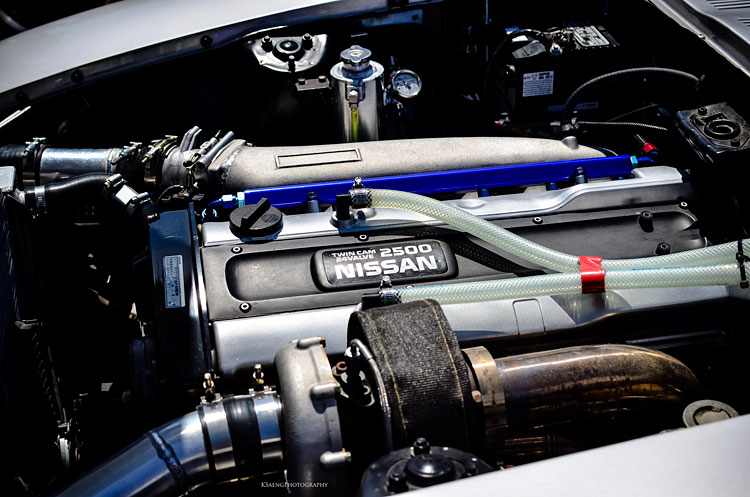
In the article, we will find the details of the RB25DET engine, including its history, specs, and overall performance.
RB25DET Engine Overview
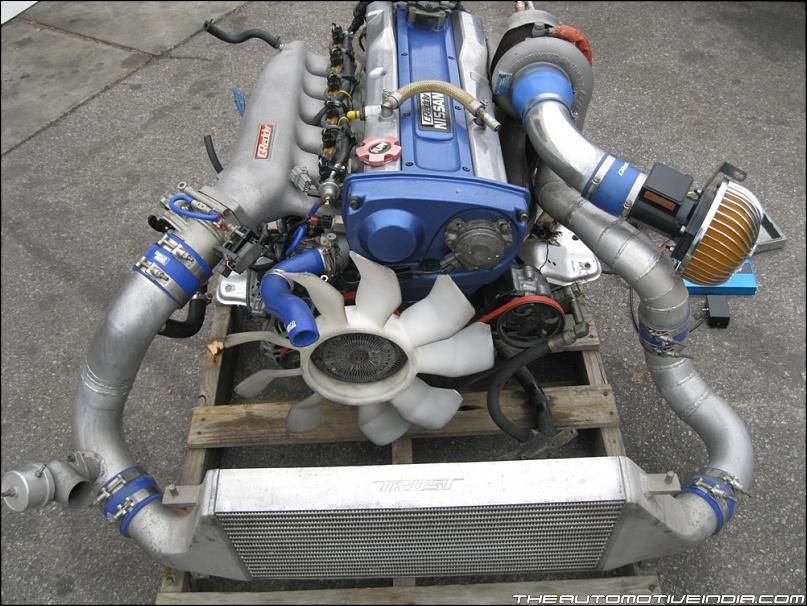
The RB25DET engine is a high-performance, turbocharged engine produced by Nissan. It is a popular choice for engine swaps and tuning projects due to its potential for high power output. The engine has a reputation for being reliable but requires careful maintenance to avoid premature failure.
History of the RB25DET Engine
The RB25DET engine, a member of Nissan’s RB engine family, first debuted in 1991 and was used in a number of vehicles, including the Stagea RS and Skyline GT-R. The 2.5-liter engine has 24 valves, an aluminum cylinder head, twin overhead camshafts, a turbocharger, and an intercooler.
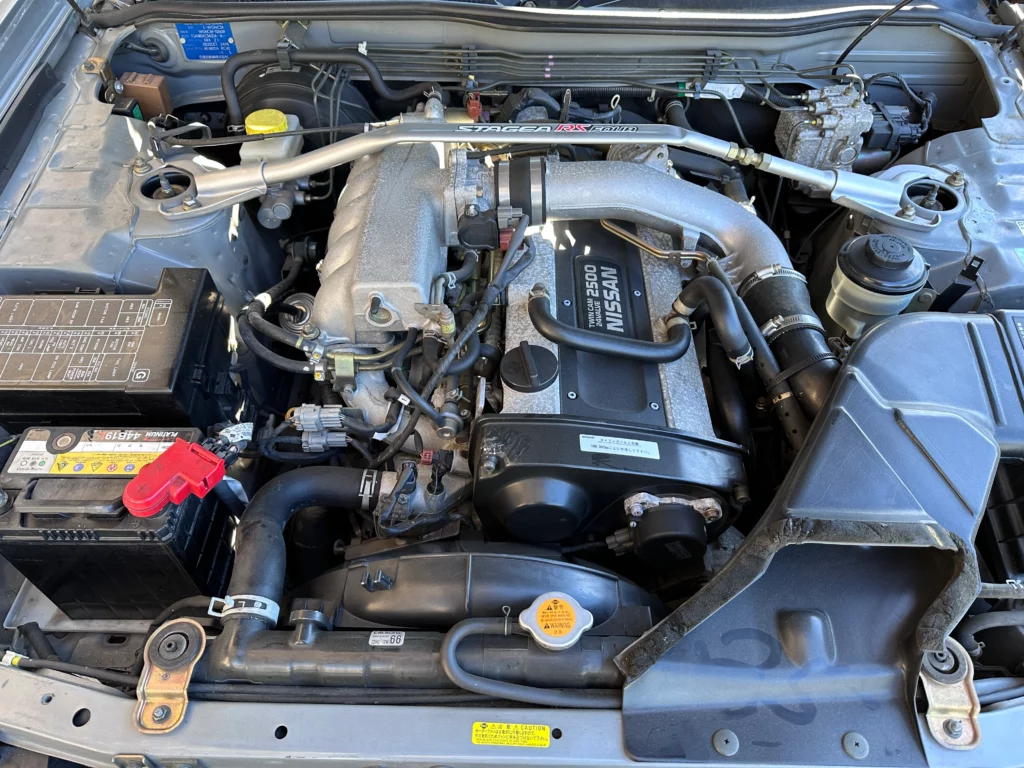
The engine underwent a number of revisions over the years, including the Series 1, Series 2, and RB25DET Neo, each of which produced more power and had better features.
Due to its performance potential and tunability, with aftermarket modifications capable of producing over 1,000 horsepower, the RB25DET engine became popular among enthusiasts.
The engine is used in numerous motorsports competitions, and thanks to its popularity, a robust aftermarket parts industry has emerged.
RB25DET Performance Upgrades

The Nissan Skyline R33 GTST from 1993 had the first Series 1 (S1) RB25DET engine. Along with a larger 45V1 turbocharger, upgrades over the RB20 included strengthened connecting rods and better pistons.
The RB25 had Nissan’s NVCS VVT technology on the intake side; its 250 hp has been increased to 370 hp thanks to the installation of new, larger injectors, while its torque stays intact at 235 lb-ft(106kg-ft).

Nissan updated its RB25DET engine and put the Series 2 (S2) engine on the market in 1995. This has an upgraded turbo with a ceramic turbine wheel rather than the aluminum wheel used in the S1 and a new electrical system.
Introducing ignition coils with integrated ignitors was the most significant change to the electrical system. A new airflow meter, ECU, cam angle sensor, and throttle position sensor were also included.
The camshafts are the only mechanically significant distinction between the S1 and S2, with the shaft of the S2 Cam Angle Sensor that engages the exhaust cam somewhat altered.
RB25DET Specs
| Engine Code | RB25DET |
| Displacement | 2,498 cc(2.5L) |
| System of Fuel | Fuel Injection using Electronics |
| Layout | Turbocharged DOHC 24V, Inline 6 cylinder |
| Cylinder Bore | 3.38 in (86 mm) |
| Torque | 235 lb-ft @ 4,800 rpm |
| Compression Ratio | 8.5:1,(S1); 9.0:1(S2) |
| Power | 245 hp to 250 hp |
| Firing Order | 1-5-3-6-2-4 |
| Piston Stroke | 2.82 in(71.7 mm) |

RB25 Iterations
Let’s have a glance at the RB25DE. Other than the power ratings, everything else is almost the same. During the RB25’s existence on the market, there were four iterations:
- RB25DE
- RB25DET
- RB25DE NEO
- RB25DET NEO
RB25DET Engine Maintenance and Repair
Proper upkeep and repair are essential for the RB25DET engine to last long and function at its best. Keep in mind the following necessary upkeep and repair tasks:
Oil Changes
Regular oil changes are necessary to maintain the RB25DET engine lubricated and operating correctly. The oil should be changed every 3,000 miles (4828km) to 5,000 miles (8046km).
Replacement Of Spark Plugs
Spark plugs are essential to the engine’s combustion process and must be changed regularly. Every 30,000 miles (48280 km), it is advised to change the spark plugs.
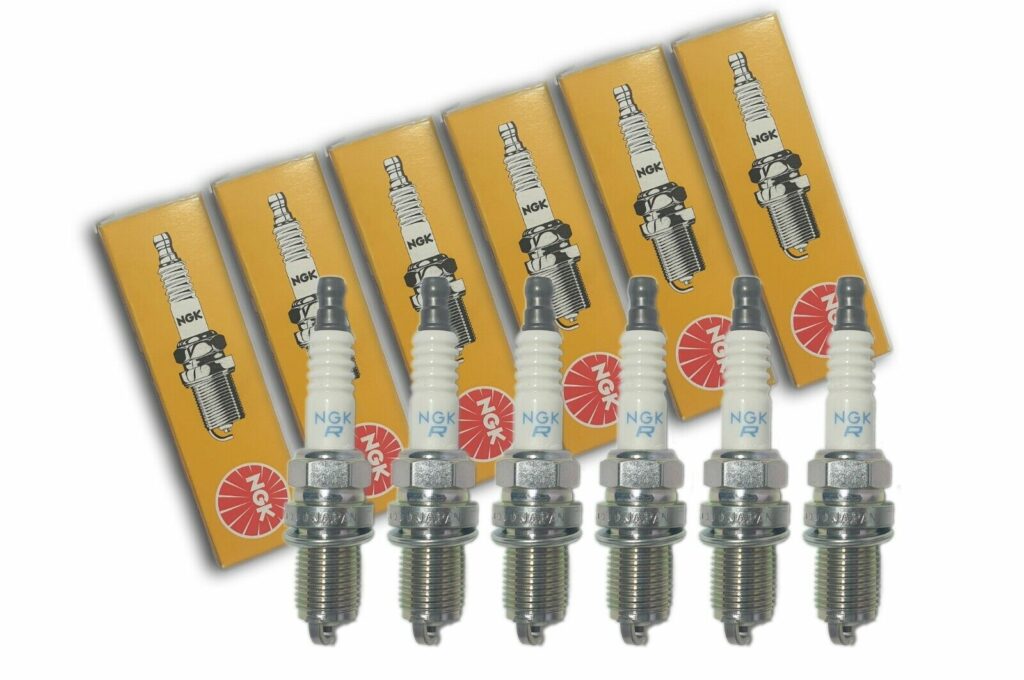
Timing Belt Replacement
The timing belt of the RB25DET engine needs to be changed regularly. The timing belt should be changed every 60,000 to 100,000 miles or 96560 to 160934 km.
Upkeep Of The Cooling System
The RB25DET engine’s cooling system keeps it from overheating. Engine damage can be avoided by performing routine maintenance on the cooling system, which includes checking the coolant level and replacing the radiator hoses and water pump as necessary.
Regular maintenance is necessary for the RB25DET engine’s turbocharger to avoid damage and maintain peak performance. This entails frequent turbocharger cleanings, repairing old or damaged parts, and checking for leakage.
1JZ-GTE vs RB25DET
This is a clash of two of the most popular 2.5L 6-cylinder engines. Both engines are pretty similar in size, with about the same bore and stroke, as well as the same head stud and bearing thickness.
This video, which shows the testing of two randomly selected blocks, was informative for this topic and may alter your opinion slightly:
Given the circumstances, the likelihood is that we will choose the 1JZ. The RB25DET would need a significant amount of money poured at it before it could attain similar statistics as the 1JZ. The 1JZ can run at a significant power since the 1JZ has frequently been observed reliably running 600 hp+ with stock internals.
The 1JZ would also win the overall dependability argument based on our observations. That being said, both engines are great, and if you can get your hands on one, you will not be disappointed! Oh, and both engines sound incredibly tempting!
SR20DET vs RB25DET
This may appear to be an unfair comparison when you consider the displacement. However, both of these engines, widely utilized for swaps, have pros and cons.
To begin, when it comes to s-chassis swaps, say for your 240SX, one of the advantages of the SR20DET over the RB25DET is that the 4-pot SR20 is roughly 80kg lighter, which is ideal for weight distribution and handling.
If you want a lot of power, perhaps for drag racing or perhaps drifting, the RB25DET is probably the better choice because of its tremendous potential.
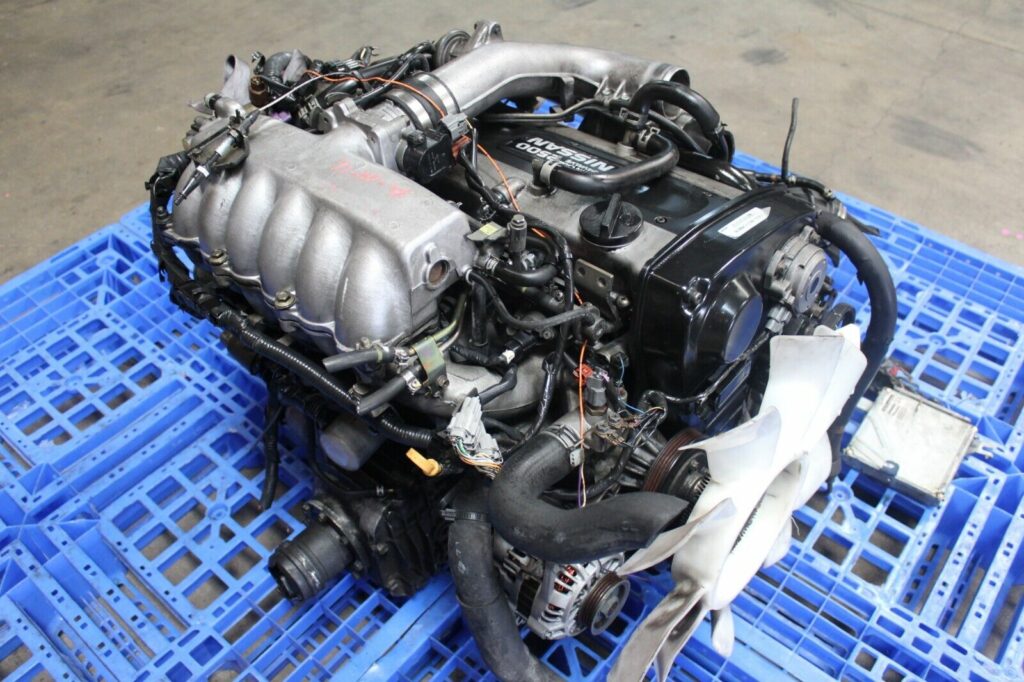
Depending on what you’ll be switching it into, the weight distribution of the SR will most likely be considerably easier to leverage to your benefit when drifting. However, if you want to exceed 350 hp, the RB may be the more efficient option.
SRs can produce higher power figures but rapidly become prohibitively expensive, whereas RBs can hit 500 hp much more easily. If you already own an SR and are thinking about swapping for an RB25DET, you’ll be left with a 260-hp engine after spending the money on the swap when you could have a 350-hp SR with significantly more torque for the same money.
Both have advantages; it all boils down to personal preference and whether you have a spare engine in your garage!
Common Problems With Nissan’s RB25DET
The RB25 engine has a few minor problems that need attention. Ignition coil failure can cause misfires, so replacing them every 60,000 miles (96560 km) is crucial. The engine may also have electronic and fuel consumption issues. Since the RB25 runs best at high revs, it can use a lot of fuel.
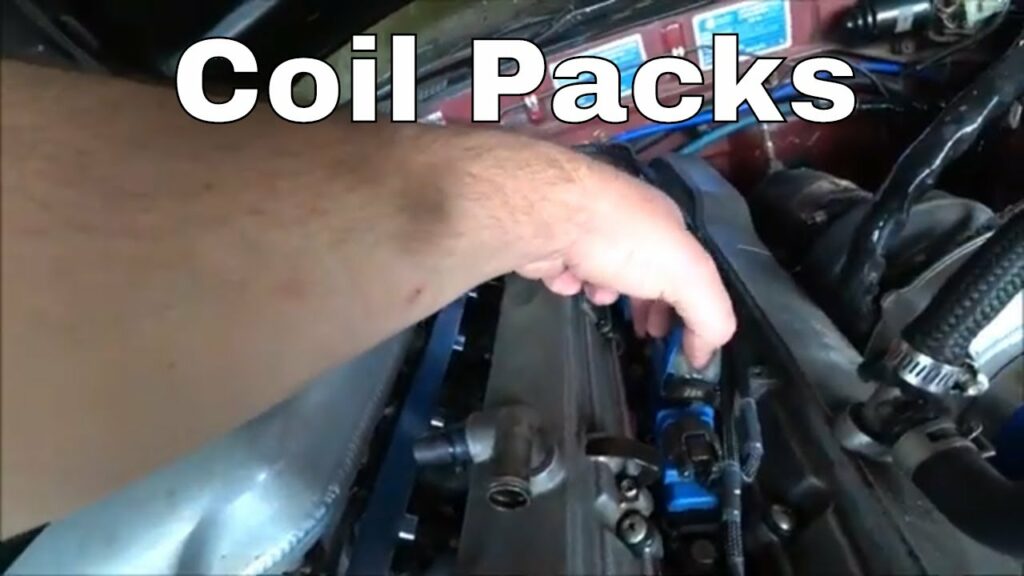
If you increase the boost pressure over 13 psi, you may have issues with a ceramic turbo. Proper maintenance and oil changes are essential to prevent premature turbo failure.
The RB25 engine isn’t unreliable, but it needs attention. Overboosting, revving, tuning, and maintenance can damage it. Boost pressure is critical, especially if you drive at high revs. Consider upgrading the internals at 13 psi and aftermarket fuel pressure regulators, head gaskets, oil coolers, head bolts, forged pistons, and connecting rods.
Are RB25DET Engine Swaps Expensive?
Several factors affect how much money you’ll spend on an RB25DET engine upgrade. A new engine can cost upwards of $10,000, while a secondhand one can cost as little as $3,000. The price may also increase due to modifying the vehicle to fit the engine.
Labor charges can be anything from a few thousand to over ten thousand dollars, depending on the change’s intricacy and the mechanic’s expertise.

In general, changing to an RB25DET engine can be pretty pricey. However, the expense could be justified for individuals who value power and flexibility. Before starting an engine swap job, it’s vital to consider the full price and set aside enough money to cover it.
The fact is, an RB25 swap will not be costly if you can find discounts. Numerous outlets sell a wide range of RB25 parts. You’ll only have to be patient and diligent in your investigation.
Furthermore, DIY is the most cost-effective strategy to save money. For example, you could complete the full structure for less than $4,000. However, this entails completing the majority of the job yourself. Labor expenditures can be expensive, ranging from $1,000 to $2,000, depending on the amount of labor.
Here are some of the expenses associated with an RB25DET swap:
| Engine costs | $1,900 and $3,500. |
| Engine mounts | $200. |
| Intercooler | $225 |
| Driveshaft | $350 |
| Radiator | $250 |
| Intake manifold | $200 |
| BOV | $100 |
| Miscellaneous | $300 |
The costs indicated above are largely influenced by the location and discounts on offer. But the common thing here is that the construction is expensive. If you finish the basic build for less than $4k, you’ll want to spend more on enhancing some of the hardware.
Remember, this is only the running gear. Potential improvements include an aftermarket exhaust, performance oil pump/cooler, button clutch, improved brakes, and coil overs. If you’re not careful with the project, a reasonably good build with quality internals will cost you $7,000, and that’s without labor. Going DIY is your greatest option to save as much money as possible.
Stage 1 mapping should get you above 300 hp but will increase the cost. A stage 1 clutch pack is $300, while the hybrid turbo ranges from $600 to $2,000. The ECU is at least as impressive. After that, you’ll need to test and fine-tune the output, necessitating a dyno. Add in the expense of auxiliaries, which can easily exceed $10,000.
RB25DET Tuning
If you want to tune an RB25DET engine and take it to the next level, follow these three stages for modifications.
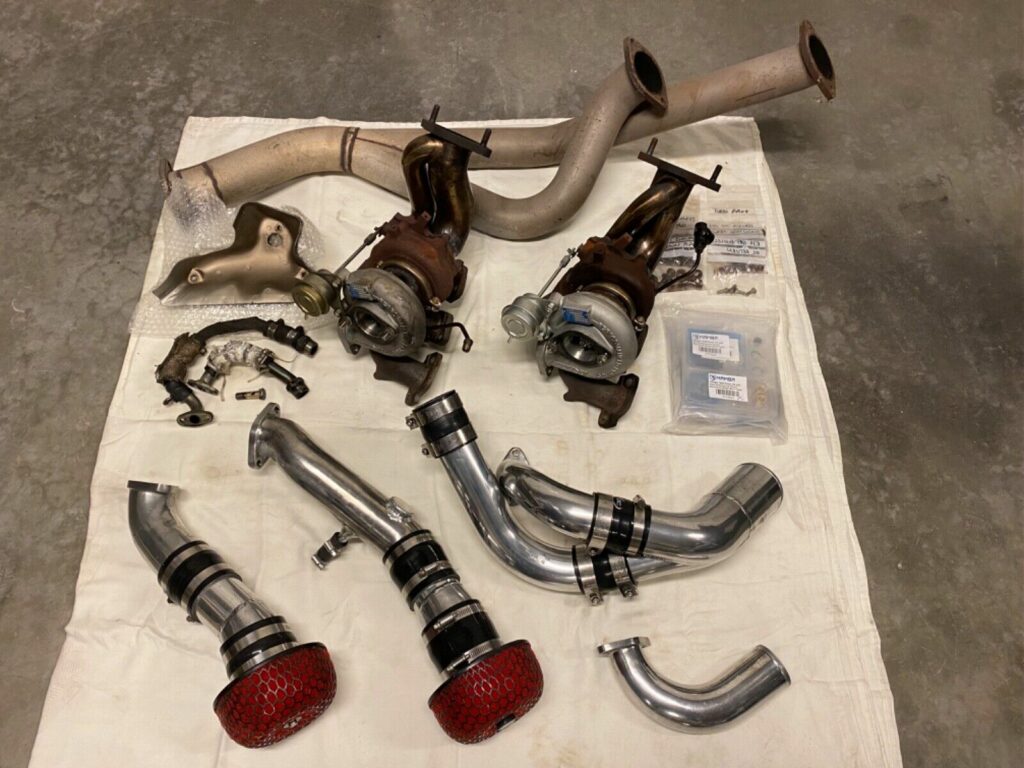
Stage 1
At this point, 300 horsepower would be the maximum achievable. It is not necessary to upgrade the turbocharger at this stage.
But you may need a sports exhaust manifold, a fast road camshaft, intake headers, a boost controller, a front-mount intercooler, panel air filters, a piggyback ECU, and a huge Z32 air flow sensor.
Since you will be using a stock turbocharger, we do not recommend exceeding 11.5 to 13 psi at this level, despite how enticing it may be.
Stage 2
Adding high-flow fuel injectors, a ported and polished head, a high-performance exhaust system, and an induction kit to your engine will help you get at least 350hp.
You should also consider improving your turbo, fuel pump, oil cooler, and oil pump.
Stage 3
Getting 400+ horsepower from an RB25DET engine is possible but expensive. You’ll need to upgrade internal parts, tweak the crank and piston, and get serious aftermarket turbochargers. Achieving 500+ horsepower requires a lot of work and aftermarket parts. Remember that these upgrades can add up quickly, so budget accordingly.
Is a Nissan RB25DET the Right Engine for Your Build?
The Nissan RB25DET engine is a popular choice among car enthusiasts, and it can work well on specific projects. However, its suitability for builds depends on your particular requirements and objectives.
The RB25DET is a 2.5-liter inline-six turbocharged engine that debuted in Nissan’s Skyline GT-R and was later utilized in other Nissan cars, such as the 240SX. It has a significant displacement, which produces more low-end torque and better response than other popular turbocharged four-cylinder engines. It is also known for having a dependable and robust engine with excellent aftermarket support. It can produce remarkable power figures and handle high amounts of boost with the correct tweaks.
The RB25DET engine, on the other hand, is relatively heavy, which can impair handling and weight distribution in some builds. Furthermore, it is recognized for being more challenging to work on than other engines, which can make maintenance and repairs more complicated and costly.
The RB25DET engine is viable for individuals seeking a strong and dependable engine with extensive aftermarket support. Those looking for a lighter and more compact engine, or those on a tight budget, should look into other options. Finally, your demands and ambitions determine the best engine for your construction.

FAQs
What Cars Use The RB25DET Engine?
The RB25DET engine was used in various Nissan models, including the Skyline GT-R (R32 and R33), the Skyline GTS-25t, and the Stagea RS. It was also used in non-Nissan vehicles, such as the Holden VL Commodore and the Ford Falcon in Australia.
How Much Power Can The RB25DET Engine Make With Upgrades?
With aftermarket modifications, the RB25DET engine has the potential to produce over 1,000 horsepower depending on several factors, including the specific modifications made, the engine’s condition, and the tuning.
What Are Common RB25DET Engine Problems?
Oil leaks, timing belt failures, fuel injector problems, and ignition coil failures are some common issues that can arise with the RB25DET engine.
What Oil Should I Use For My RB25DET Engine?
The recommended oil for the RB25DET engine is 10W-40 or 15W-50 synthetic oil with an API rating of SJ or higher.
Conclusion
The RB25DET engine is a favorite among car fans because of its excellent performance and adaptability. To keep it running smoothly and efficiently for as long as possible, performing routine maintenance like oil changes and fixing recurring issues like leaky gaskets or clogged injectors is crucial.
Despite its advanced age, the RB25DET engine’s potential for high-power output aftermarket improvements has kept it relevant. Share your experiences or questions about the engine in the comments below.

